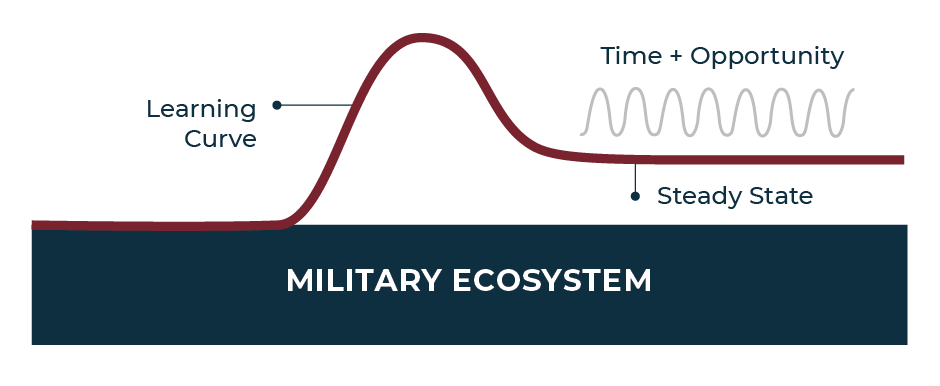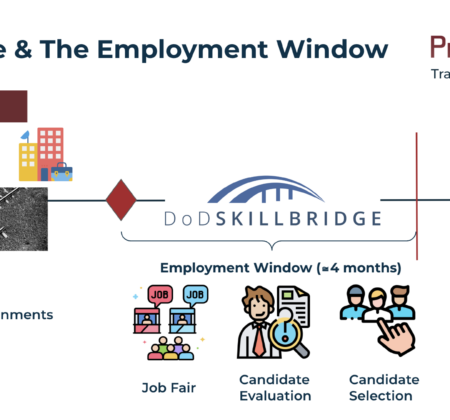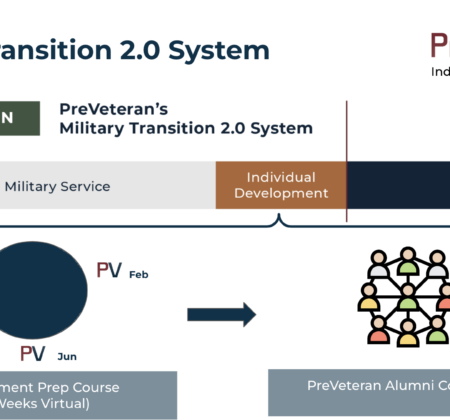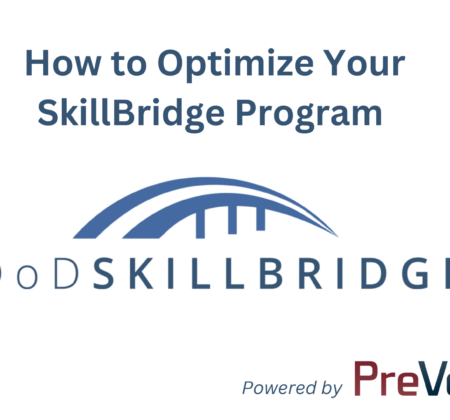For those who are serving in the military, there is a 100% certainty that you will depart the service at some point. With that in mind, the million-dollar question becomes, “When should I start my military transition?”
In this article, we will tell you exactly when you should start.
Background—Details Matter
The idea of starting military transition earlier in one’s career rather than later has been a familiar theme in research over the past 10 years. This is one of the reasons why the program of record—TAP—is now available two years prior to separation or retirement.
But this simple concept of starting it earlier in one’s career feels more mechanical than it does transformative. Simply starting the same program earlier does not change the fact that the program lacks individual specificity. So, in the absence of individual specificity with TAP, PreVeteran would like to offer you some specifics that will help you succeed in your post-military career.
Foundational to the specifics we are about to discuss are two PreVeteran tenets that underpin our entire ecosystem.
- Self-transformation—Within the active component, you represent <1% of the U.S. population (decreasing YoY) so you need to transform to find more happiness and success in the general public. Those who make the self-transformation succeed. Those who don’t will struggle more in the private sector because they’ll try to apply some lessons learned in the military that aren’t a good fit in post-military life.
- Alignment to the private sector—The private sector has different needs and wants than the military ecosystem you’ve become accustomed to. The more you know about the private sector’s needs and wants, the better you can adapt to this new environment—which translates to higher success rates.
Begin your Military Transition Planning 1-3 years Before Your Anticipated Separation or Retirement
Why? Simple—two reasons. First, at 1-3 years prior, you are in a sweet spot where you are close enough that there is a real need to get you prepared for this big life change. Second, the self-transformation and alignment to the private sector I wrote about in the previous paragraph are not academic exercises—they are significant, required changes you need to make to be successful after the military. And these changes take time.
OK, now you might be asking, “How exactly do I do this—I’m busy!”
Good question. The simple answer is that you’ll need to carve time out of your busy life to prioritize preparations for your post-military success. And to help you visualize how to carve that time out for critical professional development—like preparation for military transition—we’d like to introduce you to our PreVeteran Learning Curve Model.

Here is how the model works. On the left side you can see the learning curve. If you’re not familiar with what a learning curve is, it is when you have a job to learn and you devote time, energy, and resources to gain proficiency to master that job. Practically speaking, in this phase you’ll have very little free time because you will be busy focusing on learning how to perform your job proficiently. Your military job is important because your first responsibility is to the taxpayer.
At some point, however—and this is where the learning curve subsides—you no longer have to devote the same level of time, energy, and resources to perform that job proficiently.
It’s during this “steady state” 1-3 years before your anticipated separation or retirement is precisely that you should begin your military transition planning. This is in stark contrast to the existing TAP model, which has you attempt to transition during the last six months of your military career when you have too much to do and too little time to make the change.
That answers the when, now let’s talk a bit about the how.
PreVeteran Courses Provide You a Proven Roadmap
I’ve talked to hundreds of transitioning service members and they all have one thing in common. They think they can cobble together a transition model that will guarantee them success when they leave the military.
However, when I ask them about the details of their model that guarantees success, they typically fall back on the anecdotal suggestions they’ve heard from countless veteran advocates—leverage a network, find a mentor, and do informational interviews.
Anecdotes and unguided individual action simply won’t get it done. They are too general and will have you spinning your wheels and getting nowhere. You need specifics.
PreVeteran has specifics. If you are one of the 90%+ who want to be employees post-military, we’ve just launched our Employment Prep Course on our website. This course specifically will help you begin your self-transformation and alignment to the private sector and get you well down the road to post-military employment success.
Click here to visit our courses page and sign up for our course.


